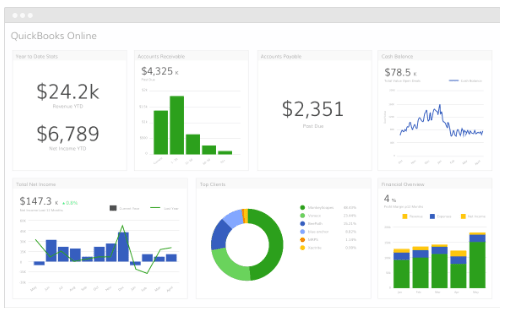Gross Margin Ratio Formula Analysis Example

Gross profit represents the actual dollar amount generated from a company’s core operations before considering other operating expenses. Gross profit does not consider the proportion of profit relative to net sales revenue. Profit margins are used to determine how well a company’s management is generating profits. It’s helpful to compare the profit margins over multiple periods and with companies within the same industry. Profitability metrics are important for business owners because they highlight points of weakness in the operational model and enable year-to-year performance comparison.
Gross Profit Margin Ratio Analysis
- One key performance indicator that drives profitability and informs decision-making is Gross Margin.
- Usually, your in-house marketing team or external collaborators decide on a predetermined milestone that considers users activated.
- To truly gauge the effectiveness of its gross margin, a company must compare it against industry averages.
- Some of these expenses include product distribution, sales representative wages, miscellaneous operating expenses, and taxes.
- The above result means that for every dollar Joe’s Auto Shop brings in, 49.16% of it is available to pay for operations.
- Never increase efficiency at the expense of your customers, employees, or product quality.
By exclusively considering costs directly tied to production, it offers a clear picture of a company’s ability to generate profit from its core operations. Gross margin is a financial metric that provides essential insights into a company’s production efficiency and overall profitability. To define gross margin in simpler terms, it is simply gross profit, stated as a percentage of the revenue. This might entail renegotiating supplier contracts, adopting more efficient production techniques, or leveraging technology to reduce waste. This might involve tapping into new markets, launching innovative products, or refining the marketing strategy.

Gross Profit Margin Formula
This is the figure that is most likely to be reported in a company’s financial statements. Margins for the utility industry will vary from those of companies in another industry. The average net profit margin for general retail sits at 2.65%, while the average margin for restaurants is 12.63%. Is there software you can use to collect and organize customer information?
Increase Revenue

While the gross profit margin measures the profitability of a production process, net profit margin considers all of the expenses a company takes on—not just the ones linked to production. Because gross profit ratio is based on revenue and gross profit which is not considered as a measure of success. It does not consider other important factors such as returns on investment, Working Capital and the quality of earnings.

At the initial stages, you may calculate your gross churn, meaning how many people canceled or didn’t renew their subscriptions. As you’re growing, this metric may not be enough, and you can turn to gross revenue churn, which refers to the percentage of revenue you lose due to cancellations and subscription downgrades. Maybe customers don’t value your premium offerings or end their subscriptions involuntarily due to failed payments. You can think of the numerator, or top number, in this equation as a company’s net sales, since it tallies all revenues and subtracts all expenses. When you calculate the difference and divide it by total revenue, you get your net profit margin. The percentage of gross profit achieved by a company in relation to its total sales.
Improving Gross Profit
The gross margin is the revenue remaining upon subtracting cost of goods sold (COGS), expressed as a percentage. Knowing your gross margin rate or ratio is extremely helpful for businesses large and small. For example, Joe’s Auto Shop recognized revenues in the amount of $120,000 in the month of January, while his cost of goods sold was $61,000. Remember, we’re not including any general expenses in this calculation, only expenses directly related to producing the goods and services.
Product mix
Generally put, a higher gross profit margin is perceived positively in practically all industries, since the potential for higher operating margins and net profit margins increases. Determining a company’s gross margins for multiple reporting periods provides insight into whether the company’s operations are becoming more or less efficient. This profitability ratio evaluates the strength of a company’s sales performance in relation to production costs. A higher gross profit margin indicates a more profitable and efficient company. However, comparing companies’ margins within the same industry is essential, as this allows for a fair assessment due to similar operational variables. For example, a legal service company reports a high gross margin ratio because it operates in a service industry with low production costs.
Gross Margin vs. Profit Margin: What’s the Difference?
The managers of a business should maintain a close watch over the gross margin ratio, since even a small decline can signal a drop in the overall profits of the business. A further concern is that the costs that go into the calculation of net price can include some fixed costs, such as factory overhead. When this is the case, the gross profit margin will be quite small (or non-existent) when sales are low, since the fixed costs gross margin accounting must be covered. As sales volume increases, the fixed cost component is fully covered, leaving more sales to flow through as profit. Thus, the gross margin ratio is more likely to be low when sales volume is low, and increases as a proportion of sales as the unit volume increases. The gross profit margin can be used by management on a per-unit or per-product basis to identify successful vs. unsuccessful product lines.
- On the other hand, a penetration pricing strategy, where prices are set lower to capture market share, might result in slimmer margins, at least in the short term.
- You then express the result as a percentage by dividing by total revenue and multiplying by 100, similar to gross and net profit margins.
- Companies use gross margin to measure how their production costs relate to their revenues.
- This is the figure that is most likely to be reported in a company’s financial statements.
- Learn financial statement modeling, DCF, M&A, LBO, Comps and Excel shortcuts.
- Our work has been directly cited by organizations including Entrepreneur, Business Insider, Investopedia, Forbes, CNBC, and many others.
